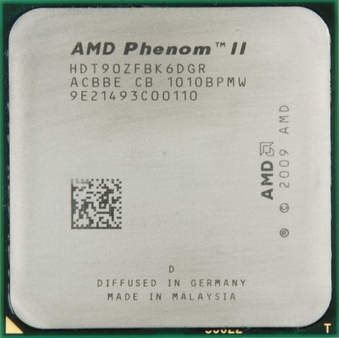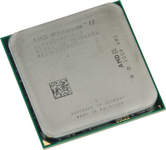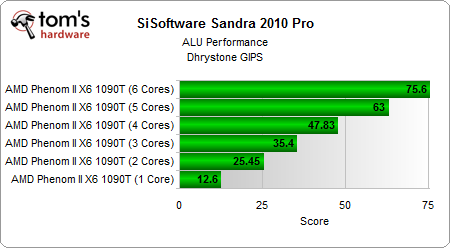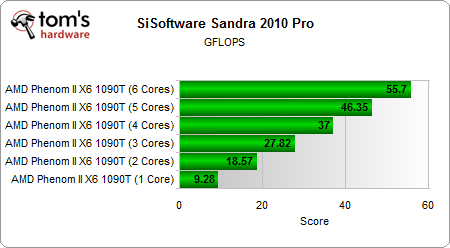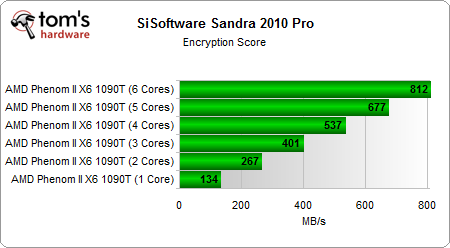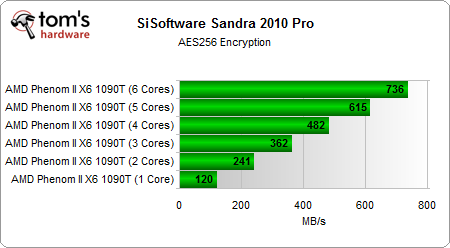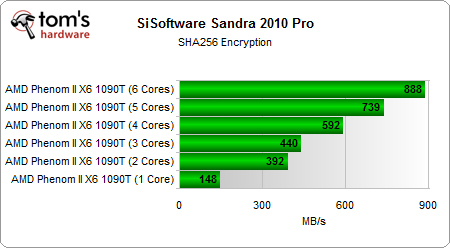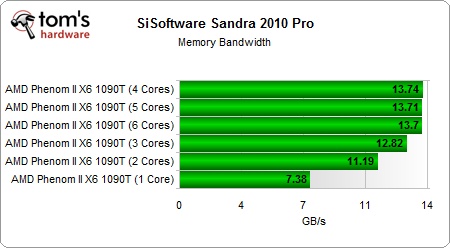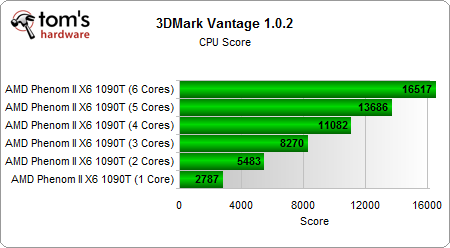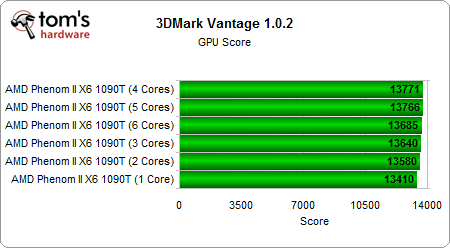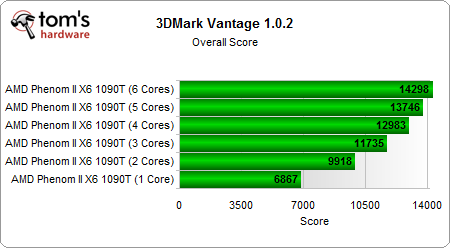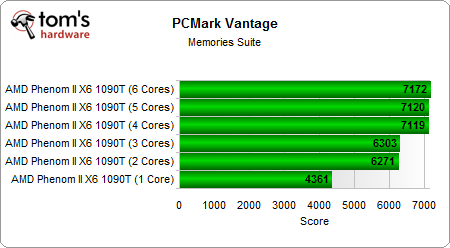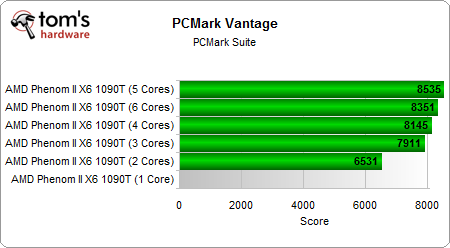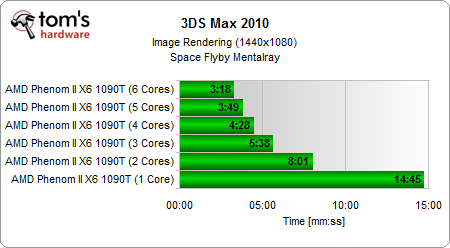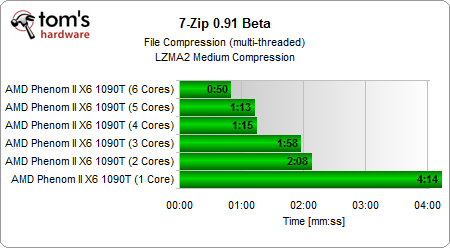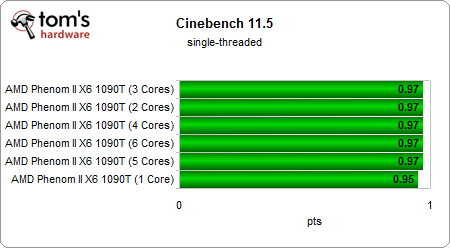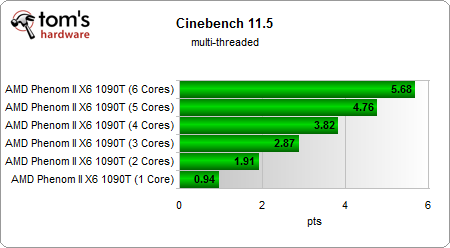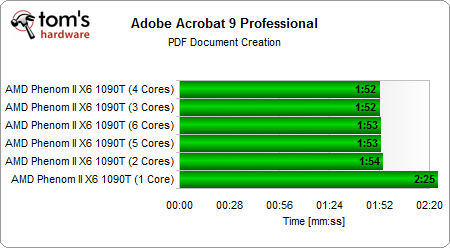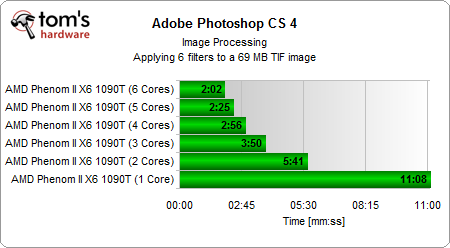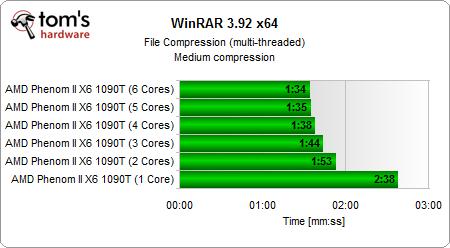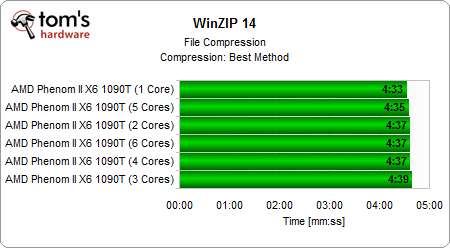
|
TopNax |
|
Home†††††† Previous††††††† AMD page†††††††† Intel page†††††††† Next |
Six-Core Analysis: AMDís Phenom II X6 Gets Scaled Down |
|
Whatís the real benefit of six cores versus five, four, three, two, or one? This article looks at the performance, power, and efficiency of AMD's Thuban-based six-core Phenom II X6 1090T processor running with several different core configurations. Depending on core counts, cache, and power consumption, processors may not be running at their "best" with all cores enabled. After all, AMD's Thuban-based Phenom II X6 1055T and 1090T share the same 6MB L3 cache as the manufacturer's Phenom II X4s, X3s, and X2s. Today we're looking into the new Phenom II X6 processor's performance, power consumption, and efficiency by testing it with all possible core counts, from six down to one.
Looking at the differences between four and six cores makes sense from another perspective: as you could see in our article Meet Zosma: AMDís Quad-Core Phenom II X4 960T Gets Unlocked, it's possible to unlock some AMDs processors to get additional processing cores. Whether or not this unlocking is reliable is a different story, though, as the six-core processor was probably turned into a quad model because of yield issues on one or two cores. This is why you should run extensive reliability testing before even thinking about putting the system into commission.
|
Turbo CORE Implications And Motherboards |
|
For more back-story on 890FX and the Phenom II X6, check out our launch coverage: AMD Phenom II X6 and 890FX Platform Review. It contains all of the details on AMDís latest flagship offering. In this, we also mentioned how to unlock the Zosma quad-core into a Thuban six-core, though AMD has since announced that the quad-core Zosma probably won't make it to retail any time soon.
AMD has two different Thuban versions: the Phenom II X6 1090T at 3.2 GHz and the 1055T at 2.8 GHz. Both are based on a six-core design that offers 512KB L2 cache per core and a shared 6MB L3 cache. A crossbar switch enables access to the dual-channel DDR3 memory controller and the HyperTransport link connecting the CPU to the chipset. All new four- and six-core processors (Zosma and Thuban) implement AMDís Turbo CORE feature, which dynamically accelerates the processor to clock speeds beyond the nominal speed. The amount of acceleration depends on system load, and it does not automatically slow down unused cores. Still, the feature gives you an extra few hundred megahertz during peak load situations so long as the thermal envelope allows. |
|
Turbo CORE Implications Switching individual cores off means there should be more thermal headroom for taking frequent advantage of the Turbo CORE feature. Benefits should be visible in applications that werenít optimized to take advantage of multiple processing units. In these cases, the dynamic acceleration feature should accelerate one or two cores to maximum speed. Unfortunately, this isnít reflected in our benchmark results. Motherboards While technically all Socket AM3 motherboards are capable of running processors on fewer cores, we wanted to use a solution based on the latest 890FX chipset. So far, we've only compared a few 890GX motherboards with integrated graphics (Ed.: since this piece was written, we've also published a five-board 890FX motherboard roundup, too). So, we decided to use the Asus Crosshair IV Formula again. It remains to be seen how many Socket AM3 motherboards are equipped with the necessary BIOS functions to disable individual processing cores. Based on our observations of Intelís LGA 1366-based options, there are very few board/BIOS combos on the market that allow switching your CPUs to use an individual core count. |
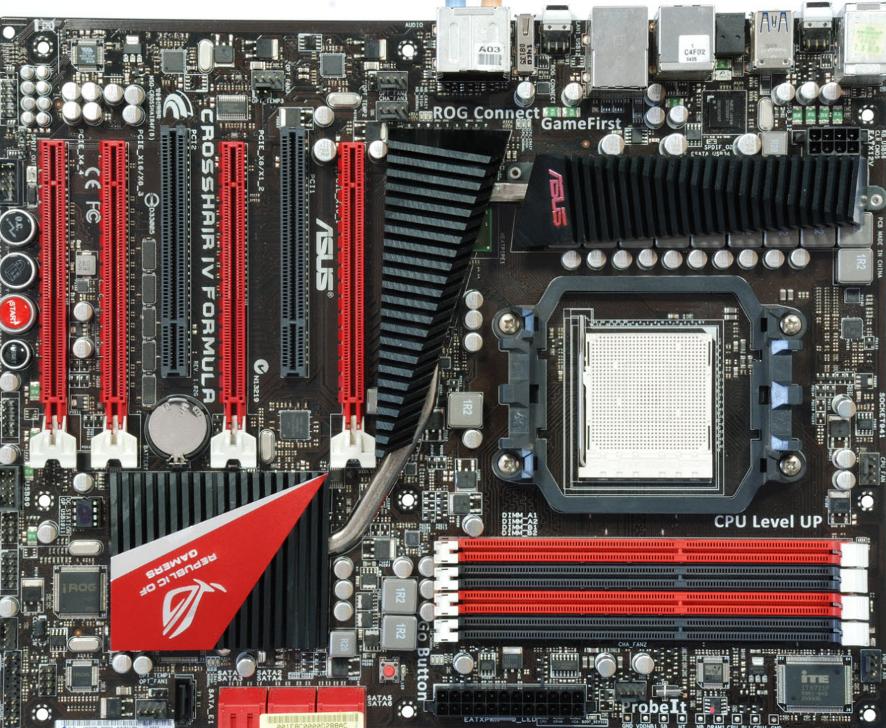
|
We used Asusís 890FX Crosshair IV Formula board, which allows setting an individual number of active CPU cores. |
Test Setup And Benchmark Settings |
Benchmark Results: Synthetics |
|
The ALU test of Sandra 2010 Pro shows that each core you add introduces a multiple of single-core performance with a few exceptions. Two cores seem to deliver more than 2x performance.
The SHA256 encryption test again shows that two cores perform exceptionally well. This could be because of Turbo CORE.
The memory bandwidth test shows that four cores easily saturate the DDR3 memory controller. |
Benchmark Results: 3DMark And PCMark Vantage |
|
3DMarkís CPU test scales nicely with every core you add.
The GPU test is limited by the Radeon HD 5850 we use here.
The overall score blends both results and proves that graphics horsepower is more important once you have two or more cores.
PCMark Vantage did not run on the Phenom II X6 that we limited to a single core. The overall results show that more cores mean more performance, but not necessarily a lot. Keep in mind that PCMark is a synthetic benchmark that doesnít reflect everyday operation. Rather, it was designed for measuring the performance of specific workloads. |
Benchmark Results: Applications |
|
7-Zip doesnít work well on an uneven number of cores. Three and five active cores are hardly faster than two and four. However, the archiving tools do generally benefit a lot from additional cores (the exception being WinZip).
The multi-threaded Cinebench test scales well while the single-threaded test run is limited, naturally.
Adobeís Acrobat could be much faster if it only were optimized to take advantage of multiple processing cores. You can't squeeze much more out of it once you reach two processing cores at high clock speeds.
Photoshop is different, and benefits significantly from each core, although it's important to note that performance benefits may vary depending on the filters you apply. Some are thread-optimized; others arenít.
WinRAR is a thread-optimized archiving tool, but it hits limits once you have four cores. Going to six doesnít speed up your file management noticeably.
WinZip, which is considered the most popular archiving tool, delivers painful results. There are hardly any differences between one and six cores. Clearly, the software is fully single-threaded. |
|
Home†††††† Previous††††††† AMD page†††††††† Intel page†††††††† Next |
|
System Hardware |
|
|
Hardware |
Details |
|
Performance Benchmarks |
|
|
Motherboard (Socket AM3) |
Asus Crosshair IV Formula (Rev. 1.0), Chipset: AMD 890FX, BIOS: 0701 (04/02/2010) |
|
CPU AMD I |
AMD Phenom II X6 1090T (45 nm, 3.2 GHz, 6 x 512KB L2 and 6MB L3 Cache, TDP 125W, Rev. C3) |
|
RAM DDR3 |
2 x 2GB DDR3-1333 (OCZ3G2000LV4GK 8-8-8-24) |
|
Graphics |
Sapphire Radeon HD 5850 |
|
Hard Drive |
Western Digital VelociRaptor, 300GB (WD3000HLFS) |
|
Power Supply |
PC Power & Cooling, Silencer 750EPS12V 750W |
|
System Software & Drivers |
|
|
Operating System |
Windows 7 Ultimate x64 |
|
Drivers and Settings |
|
|
AMD Chipset Drivers |
Catalyst 10.3 Motherboard/Chipset Drivers |
|
Audio Benchmarks and Settings |
|
|
Benchmark |
Details |
|
iTunes |
Version: 9.0.3.15 |
|
Lame MP3 |
Version 3.98.3 |
|
Video Benchmarks and Settings |
|
|
Benchmark |
Details |
|
HandBrake CLI |
Version: 0.94 |
|
MainConcept Reference v2 |
Version: 2.0.0.1555 |
|
Application Benchmarks and Settings |
|
|
Benchmark |
Details |
|
7-Zip |
Version 9.1 beta |
|
WinRAR |
Version 3.92 |
|
WinZip 14 |
Version 14.0 Pro (8652) |
|
Autodesk 3d Studio Max 2010 |
Version: 10 x64 |
|
Cinebench 11.5 |
Version 11.5 Build CB25720DEMO |
|
Adobe Photoshop CS 4 (64-Bit) |
Version: 11 |
|
Adobe Acrobat 9 Professional |
Version: 9.0.0 (Extended) |
|
Microsoft Powerpoint 2007 |
Version: 2007 SP2 |
|
Fritz |
Fritz Chess Benchmark Version 4.3.2 |
|
Synthetic Benchmarks and Settings |
|
|
Benchmark |
Details |
|
3DMark Vantage |
Version: 1.02 Patch 1901 |
|
PCMark Vantage |
Version: 1.0.2.0 Patch 1901 |
|
SiSoftware Sandra 2010 |
Version: 2010.1.16.10 |
